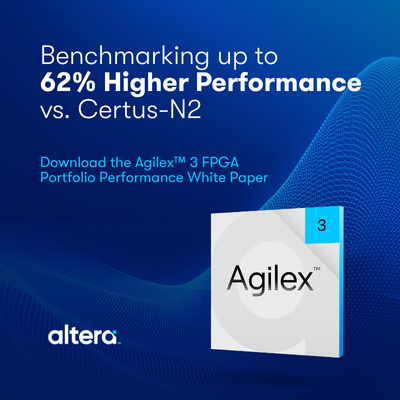San Diego, USA and Cheltenham, UK – 3rd June 2010. Atego, the leading independent supplier of industrial-grade, collaborative development tools for engineering complex, mission- and safety-critical architectures, systems, software and hardware, has launched Artisan Studio 7.2, a major new version of its flagship model-driven development tool suite.
Artisan Studio 7.2 delivers a variety of significant new modeling capabilities and functions. Artisan Studio has been re-architected to provide role-based Editions which have been specifically designed to make the working environment more relevant and efficient for the specialist needs of Enterprise Architects, Systems Engineers and Software Engineers. Artisan Studio also adds DoDAF capabilities to complete its support for the OMG’s UPDM 1.0 standard for defense architectural frameworks. Artisan Studio 7.2 also extends Artisan Studio Reviewer with metric reporting and simplifies the user interface to Artisan Publisher as well as continuing to improve core technologies with a new model comparison tool, the Artisan Model Differencer, and adds more functionality for the Automatic Code Synchronizer and Activity Modeling.
“The launch of Version 7.2 continues to extend the market-leading position of Artisan Studio with the introduction of significant new concepts, features and functions to improve the development of mission and safety-critical embedded systems and software development,” said Hedley Apperly, Vice-President of Product Marketing at Atego. “The introduction of role-based Editions is particularly innovative, aligning Artisan Studio with the specific roles and needs of Enterprise Architects, Systems Engineers and Software Engineers, while allowing them all to continue to Work-as-One.”
Artisan Studio Architect Enterprise Edition focuses on the capabilities required by an Enterprise Architect. It provides comprehensive support for UPDM including both DoDAF and MODAF, which addresses the visual modeling needs of the global defense community by providing support for all seven UPDM viewpoints and a standardized means to describe both DoDAF and MODAF architectures which delivers enormous benefits for developers of military systems in terms of design consistency, quality and efficiency, improved tool interoperability and cost savings.
Artisan Studio Designer Enterprise Edition will be the tool of choice for Systems Engineers. They can take advantage of Artisan Studio’s SysML profile to build systems and systems of systems using the industry standard SysML concepts and modeling language. Artisan Studio allows users to focus on systems engineering by providing the capability to document requirements, analysis diagrams, traceability and manage change all within one tool using Artisan Studio’s integration with leading 3rd party tools like DOORS and Mathworks Simulink.
Artisan Studio Developer Enterprise Edition is for Software Engineers. It enables the generation of code from the design and is fully equipped with Artisan Studio’s Automatic Code Synchronizer and Transformation Development Kit to allow them to automatically generate code from a design that matches the company’s best practices and coding standards. This Edition is available for the C/C++, C#, VB, Java and Ada programming languages.
The highly successful Artisan Studio Reviewer now has a whole new model metrics facility with 80 new metric reports, 13 user-defined reviews and new customer-requested reviews. The metrics provide powerful statistics for managers on the maturity of the models, complementing the correctness, completeness and consistency checks that were already available.
With the launch of Artisan Studio 7.2, Artisan Publisher now has facilities to copy elements directly from an open Artisan Studio model and clearly view the content of the document. Additionally, many new templates have been introduced, specifically for the quick creation of repeatable and configurable output in UPDM, SysML and UML designs.
Finally, Artisan Studio Version 7.2 includes code generators for POSIX compliant operating systems and many other lower level improvements to its modeling environment.
“The launch of Artisan Studio 7.2 continues to deliver on our Work-as-One strategy,” said James B. Gambrell, Executive Chairman of Atego. “Not only does Artisan Studio provide a single, purpose-built tool suite that joins up embedded engineering disciplines, teams and organizations but, by introducing the concept of role-based Editions and metrics reporting, it also now specifically caters for the requirements of the diverse and disparate specialists needs in the design chain – Enterprise Architects, Systems, Software Engineers and Managers – in ways that match their explicit job functions and needs.”
About Atego
Atego™, is the leading independent supplier of industrial-grade, collaborative development tools for engineering complex, mission- and safety-critical architectures, systems, software and hardware. Atego delivers a stable, robust working environment to thousands of users across an extensive range of complex applications in demanding engineering sectors such as aerospace, defense, automotive, transportation, telecommunications, electronics, and medical. Atego’s AonixPERC® is the leading, highly reliable, real-time embedded virtual machine solution for running Java™ programs deployed today. Atego also has the largest number of certified Ada applications (Aonix ObjectAda®) at the highest level of criticality. Atego’s standards-based modeling tool suite, Artisan Studio® provides comprehensive support for the leading industry standards, including OMG SysML, UML and Architectural Frameworks. Atego Workbench™provides a fully integrated, collaborative engineering framework for the trouble-free deployment and maintenance of best-in-class tools for mission and safety-critical systems and software development. Atego’s tools deliver on the promise of an integrated collaborative development environment – allowing architecture, systems, software and hardware engineering teams to Work as OneSM – from concept through to delivery, maintenance and support. Founded in 2010 in a merger between Artisan Software Tools and Aonix, Atego is headquartered in San Diego, CA, USA and Cheltenham, UK with offices in France, Germany and Italy, and is supported by a global distributor network. For more information visit: www.Atego.com.
Related




